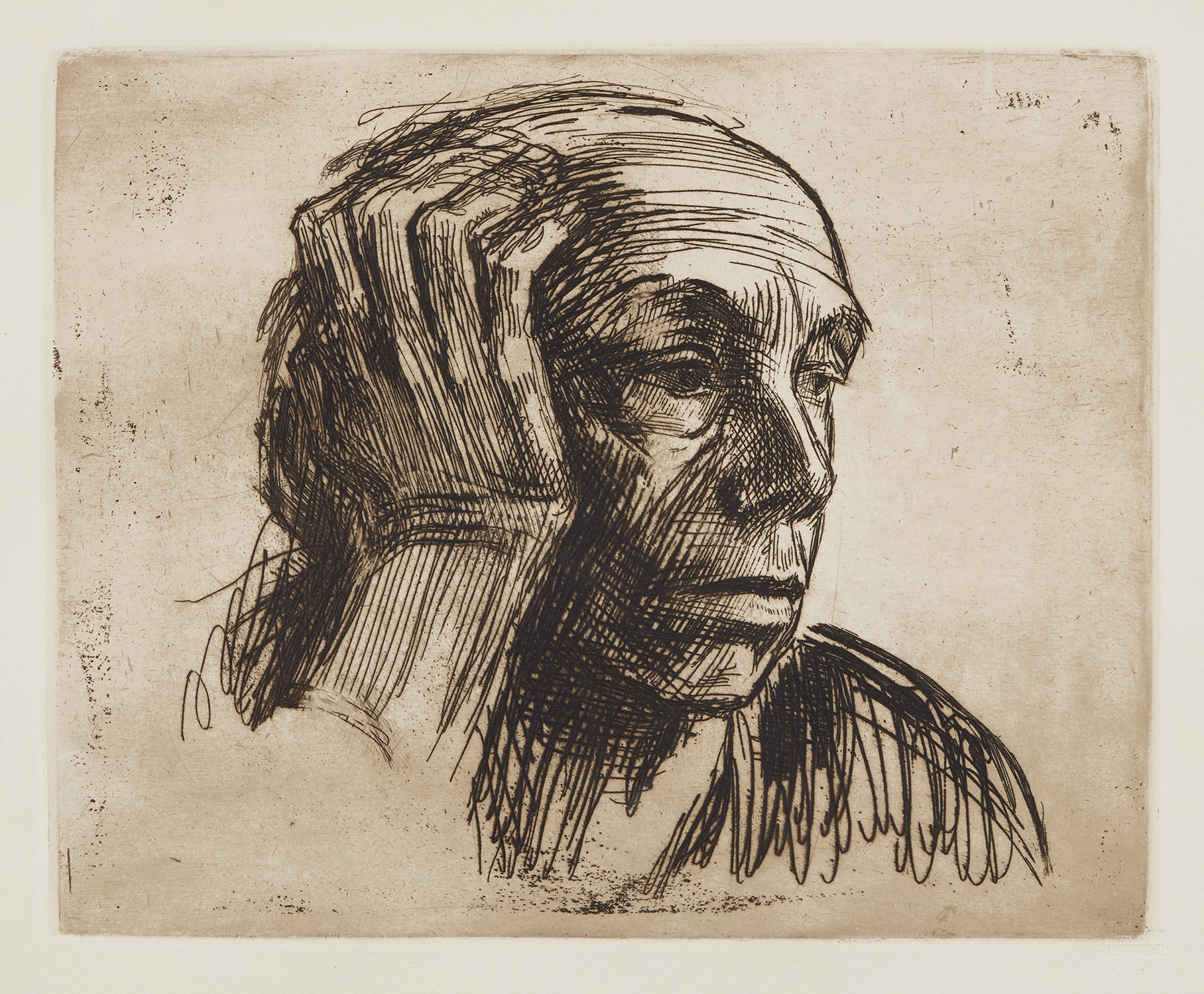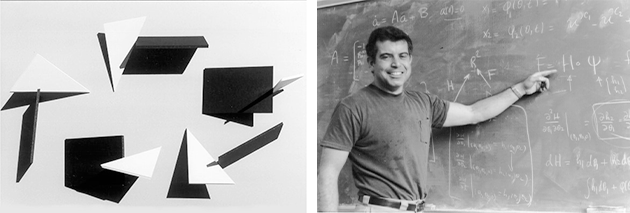

67
Käthe Kollwitz
Selbstbildnis (Self-Portrait) (K. 171)
- Estimate
- $300 - 400•
S. 13 7/8 x 16 1/2 in. (35.2 x 41.9 cm)
Further Details
“The operative word that unifies art and mathematics is SEEING. More precisely, art and mathematics are both about SEEING RELATIONSHIPS. One can see certain mathematical forms as art forms, and creativity is about seeing from a new viewpoint.”
—Nathaniel (Nat) Friedman
A mathematician, educator, and pioneer in the international art and math movement, Professor Nat Friedman (1938-2020) used his discerning eye for mathematical forms to build a distinctive collection of artwork, favoring dynamic sculptures and prints that blurred the line between figuration and abstraction, as well as positive and negative space. Friedman’s art collection was just one element of a life spent working at the intersection of art and mathematics, founding an international annual conference on the subject as well as a quarterly math art magazine called Hyperseeing. Friedman also developed his own artistic practice, taking his first sculpture class in 1971.
‘Hyperseeing’ was also the term Friedman developed in his scholarship to describe a unique mode of perception that allows the viewer to simulate seeing every side of an artwork at the same time, approximating four-dimensional perspective from a single point of view. This philosophy was notably embodied by the boundary-pushing abstraction of Picasso and the Cubists, who depicted multiple views of a subject together into a singular geometric field. In Friedman’s own theoretical framework, hyperseeing was best exemplified by ‘hypersculptures’: a set of sculptures that present a three-dimensional abstract form from various interesting orientations, allowing one to see multiple views of the form from one viewpoint. As Friedman noted, “In general, experience with hypersculptures also motivates an increased appreciation of sculpture since one learns to look harder and more closely from all angles.”

[Left] An illustration of a hypersculpture from Friedman’s essay “Hyperseeing, Hypersculptures and Space Curves,” 2001.
[Right] Nathaniel Friedman.
The British artist Henry Moore knew Friedman personally and shared his nuanced understanding of spatial relationships and the notion of hyperseeing as it relates to art and sculpture. Quoted in an essay by Friedman, Moore once said, “[The sculptor] must strive continually to think of, and use, form in its full spatial completeness… He mentally visualizes a complex form from all round itself; he knows while he looks at one side what the other side is like.”i Moore’s close attention to perspective is evident in Friedman’s personal collection of the artist’s maquettes and etchings; Moore’s forms seem to turn and rotate by themselves, governed by their unique internal physics. In 1984, as part of their ongoing dialogue, Friedman sent Moore his own sculptural forms, made from wood and shell. Upon receiving them, Moore wrote to Friedman: “I’m delighted to have them and shall keep them around me to study and appreciate them. I really am very pleased – I shall draw them.”
Friedman’s career as an educator embodied a maxim from the artist Eduardo Chillida, one that was oft quoted in Friedman’s own writings: “to look is one thing, to see is another thing.”ii Through his various pursuits, Friedman championed art’s potential to help us see, rather than look at, the world around us. Friedman’s collection is a testament to his career-defining passion, offering the rare chance to reexamine the work of artists like Picasso, Chillida, and Moore through the practiced eyes of an art practitioner and mathematician.
iNat Friedman, “Hyperseeing, Hypersculptures and Space Curves,” Visual Mathematics, vol. 3., no. 9 (2001), online.
ii Eduardo Chillida, Basque Sculptor: Home Vision, 1985, video.